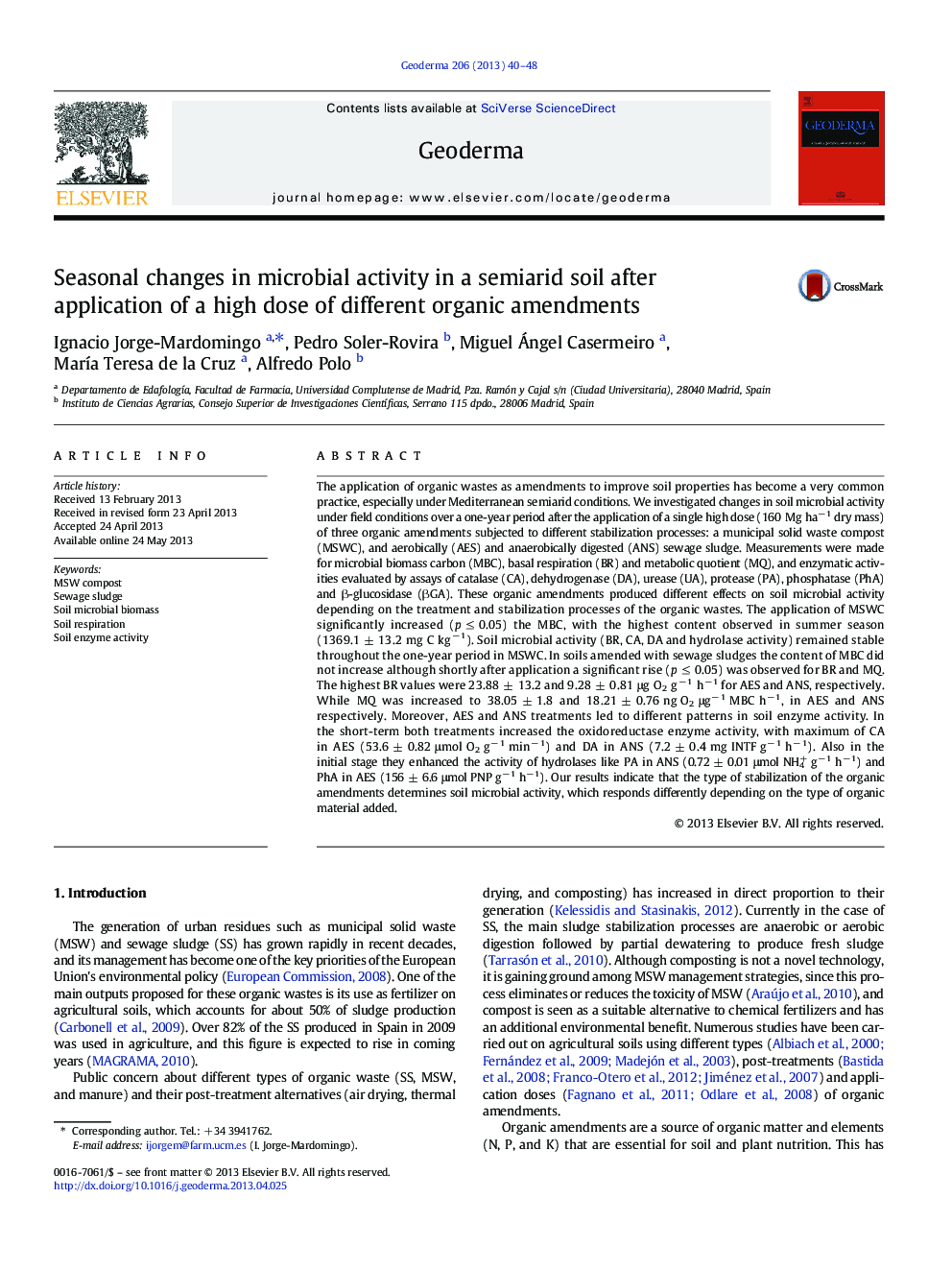| کد مقاله | کد نشریه | سال انتشار | مقاله انگلیسی | نسخه تمام متن |
|---|---|---|---|---|
| 4573472 | 1629483 | 2013 | 9 صفحه PDF | دانلود رایگان |

• Properties of organic wastes determine their effects on soil microbial activity.
• At medium-term MSWC promoted soil microbial activity and growth.
• Sewage sludge temporarily boosted basal respiration and metabolic quotient.
• We carried out a field experiment under Mediterranean semiarid climate.
The application of organic wastes as amendments to improve soil properties has become a very common practice, especially under Mediterranean semiarid conditions. We investigated changes in soil microbial activity under field conditions over a one-year period after the application of a single high dose (160 Mg ha− 1 dry mass) of three organic amendments subjected to different stabilization processes: a municipal solid waste compost (MSWC), and aerobically (AES) and anaerobically digested (ANS) sewage sludge. Measurements were made for microbial biomass carbon (MBC), basal respiration (BR) and metabolic quotient (MQ), and enzymatic activities evaluated by assays of catalase (CA), dehydrogenase (DA), urease (UA), protease (PA), phosphatase (PhA) and β-glucosidase (βGA). These organic amendments produced different effects on soil microbial activity depending on the treatment and stabilization processes of the organic wastes. The application of MSWC significantly increased (p ≤ 0.05) the MBC, with the highest content observed in summer season (1369.1 ± 13.2 mg C kg− 1). Soil microbial activity (BR, CA, DA and hydrolase activity) remained stable throughout the one-year period in MSWC. In soils amended with sewage sludges the content of MBC did not increase although shortly after application a significant rise (p ≤ 0.05) was observed for BR and MQ. The highest BR values were 23.88 ± 13.2 and 9.28 ± 0.81 μg O2 g− 1 h− 1 for AES and ANS, respectively. While MQ was increased to 38.05 ± 1.8 and 18.21 ± 0.76 ng O2 μg− 1 MBC h− 1, in AES and ANS respectively. Moreover, AES and ANS treatments led to different patterns in soil enzyme activity. In the short-term both treatments increased the oxidoreductase enzyme activity, with maximum of CA in AES (53.6 ± 0.82 μmol O2 g− 1 min− 1) and DA in ANS (7.2 ± 0.4 mg INTF g− 1 h− 1). Also in the initial stage they enhanced the activity of hydrolases like PA in ANS (0.72 ± 0.01 μmol NH4+ g− 1 h− 1) and PhA in AES (156 ± 6.6 μmol PNP g− 1 h− 1). Our results indicate that the type of stabilization of the organic amendments determines soil microbial activity, which responds differently depending on the type of organic material added.
Journal: Geoderma - Volume 206, September 2013, Pages 40–48